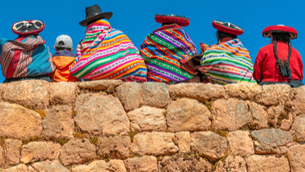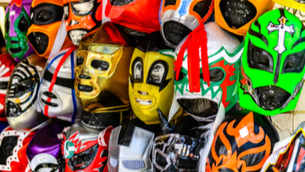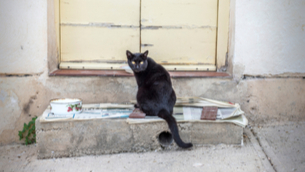Ser & Estar (Past)
I. Intro
In this lesson, we’re going to review ser and estar. We’ll start with the present, and finish with the past.II. Grammar: Review present
SER - present
| yo | soy | nosotros | somos |
| tú | eres | vosotros | sois* |
| él, ella, usted | es | ellos, ellas, ustedes | son |
ESTAR - present
| yo | estoy | nosotros | estamos |
| tú | estás | vosotros | estáis* |
| él, ella, usted | está | ellos, ellas, ustedes | están |
*Primarily used in Spain, other varieties of Spanish use ustedes
Remember, ser is used to talk about the essential characteristics of people and things - who or what they are.
¿Qué es? - Es una clase.
¿Cuándo es? Es a las diez de la mañana.
¿Cuánto es? Es gratis (free).
¿Cuál es? Es la clase de español, no es la clase de matemáticas.
¿Quién es? - Es el profesor.
¿De dónde es? - Es de Perú.
Here’s a new one. “¿De dónde es?” asks where someone or something is from. It indicates nationality or place of origin. “¿Dónde está?” asks where someone or something is at the moment of speaking.
¿De dónde eres? - Soy de los Estados Unidos.
¿Dónde estás ahora? - Estoy en la clase”.
¿De dónde es el profesor? - Es de Perú.
¿Dónde está ahora? - Está de vacaciones en Brasil.
We use estar to talk about conditions – how and where things are.
¿Cómo estás? - Estoy bien/mal/contento/triste.
¿Dónde están tus amigos? - Están todos en la fiesta, pero yo estoy en mi cama porque estoy cansado.
Let’s build upon what you know by introducing the past tense of these two most useful verbs:
III. Grammar: Past
SER - past
| yo | fui | nosotros | fuimos |
| tú | fuiste | vosotros | fuisteis* |
| él, ella, usted | fue | ellos, ellas, ustedes | fueron |
ESTAR - past
| yo | estuve | nosotros | estuvimos |
| tú | estuviste | vosotros | estuvisteis* |
| él, ella, usted | estuvo | ellos, ellas, ustedes | estuvieron |
*Primarily used in Spain, other varieties of Spanish use ustedes
Now, let’s take a look at these verb forms side by side.
IV. Grammar: Present + past together
SER - present / past
| yo | soy / fui | nosotros | somos / fuimos |
| tú | eres / fuiste | vosotros | sois / fuisteis* |
| él, ella, usted | es / fue | ellos, ellas, ustedes | son / fueron |
ESTAR - present / past
| yo | estoy / estuve | nosotros | estamos / estuvimos |
| tú | estás / estuviste | vosotros | estáis / estuvisteis* |
| él, ella, usted | está / estuvo | ellos, ellas, ustedes | están / estuvieron |
*Primarily used in Spain, other varieties of Spanish use ustedes
The takeaway: Ser and estar are irregular in both the present and past tenses.

























